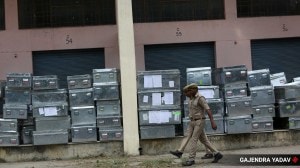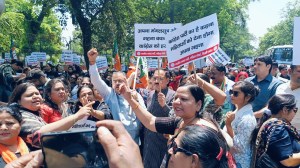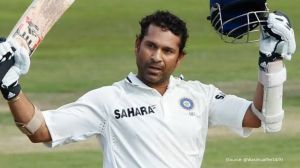- India
- International
‘Mumbai’s infrastructure must be aligned to new climate realities’: Dr Anjal Prakash
Dr Anjal Prakash, research director at Bharti Institute of Public Policy, Indian School of Business, and lead author of the chapter on cities, settlements and key infrastructure of the IPCC’s 6th Assessment Report and a cross chapter paper on mountains, speaks on what the IPCC’s 2021 report means for Mumbai and the city’s approach to climate change.
 Dr Anjal Prakash (Express)
Dr Anjal Prakash (Express)What does the 2021 IPCC report say about Mumbai?
IPCC reports are global in nature. They give us broad trends globally and their implications for different regions of the world. We can decipher the IPCC report for the city of Mumbai to draw some conclusions.
The report categorially says that due to global warming, there is a change in monsoon patterns for South Asia. The scientists, with high confidence, show that there is an increase in mean and heavy precipitation over cities and runoff is going to intensify. This means that the number of rainy days will be shorter. Mumbai must be prepared for more frequent high precipitation events in a shorter period of 2-3 days. We see glimpses of this in some of the events during this monsoon and the last couple of years.
The second aspect is due to Mumbai being a coastal city. This will mean a combination of more frequent extreme events due to sea-level rise and warming of oceans. It will lead to storm surges and extreme rainfall/river-flow events and make flooding in Mumbai more probable.
What are the red flags raised for Mumbai?
Earlier, the IPCC Special Report on the Ocean and Cryosphere in a Changing Climate (SROCC) report –the fifth assessment— which focused on oceans and cryosphere (frozen part of the world) categorically stated in 2019 that the frequency and severity of cyclones will increase. The Arabian Sea faces fewer cyclones than the Bay of Bengal. This is more because of the weather dynamics of the Arabian sea. When they do form, mostly during the post-monsoon period, they tend to go west towards Oman and the Gulf of Aden or north towards Gujarat. In 2020, it was the first time that a pre-monsoon cyclone Nisarga developed, and the landfall was near Mumbai. It brought high-intensity rainfall, but it was not as devastating as predicted. It is predicted that these cyclonic events will be more severe and will have more devastating effects on coastal cities like Mumbai in future in the wake of rapidly changing climatic conditions.

Is flooding in Mumbai only because of unprecedented and extreme rainfall events which are triggered by climate change?
Our monsoon systems are unique in the world. They help replenish the year’s water supply with rainfall in just a couple of months. Due to its intricate understanding of the monsoon system and knowledge of water harvesting, the Indian sub-continent was called a hydraulic civilization. It is but natural that during the monsoon, rivers tend to swell in their floodplains, lakes and wetlands to retain excess surface runoff. Our habitations, in the past, were designed around the understanding of natural drainage systems. Over the years, we have built our cities without understanding the natural water flow systems. Climate change is a force multiplier. It is topping up on the bad urban planning system which has discarded environmental planning. So, in my view, flooding in Mumbai is both bad environmental management and a climate change effect. Mumbai must gear up and make its infrastructure climate resilient.
What are the problems with our climate change adaptation and mitigation approach?
The problem is that all our responses to these freak weather events are knee-jerk. We wake up after the incident and there is a lack of preparedness. We must focus on a climate action plan for the city of Mumbai as these unprecedented events will become the order of the day in future, as predicted by IPCC reports.
What should be the components of the Mumbai climate change plan?
Mumbai’s infrastructure must be aligned to the new climate realities, and plans must be amended before it is too late. IPCC’s report is flagging code red for humanity if urgent action is not taken in the next 10-20 years. There are two ways to cope with this process. The first is to adapt and the second is to mitigate. Adaptation is an immediate and short-term process while mitigation is a long-term goal.
The severity of monsoon precipitation and cyclones, for example, is very unpredictable and variable in climate change scenarios, so it would be very difficult to predict its gravity in advance. Scientists can only observe the cyclone and provide broad trends. All our infrastructure projects must take the natural drainage system into account. For example, the mangrove forests that surrounded many parts of Mumbai city have been systematically destroyed to build more. The mangrove forests were the first line of defence for the city against cyclones. Many natural water bodies have been filled up and housing societies have come up. This is over and above the inadequate drainage and waste disposal system, loss of ponds that used to hold the city’s water, encroachments by illegal construction, etc.
Apr 24: Latest News
- 01
- 02
- 03
- 04
- 05







































